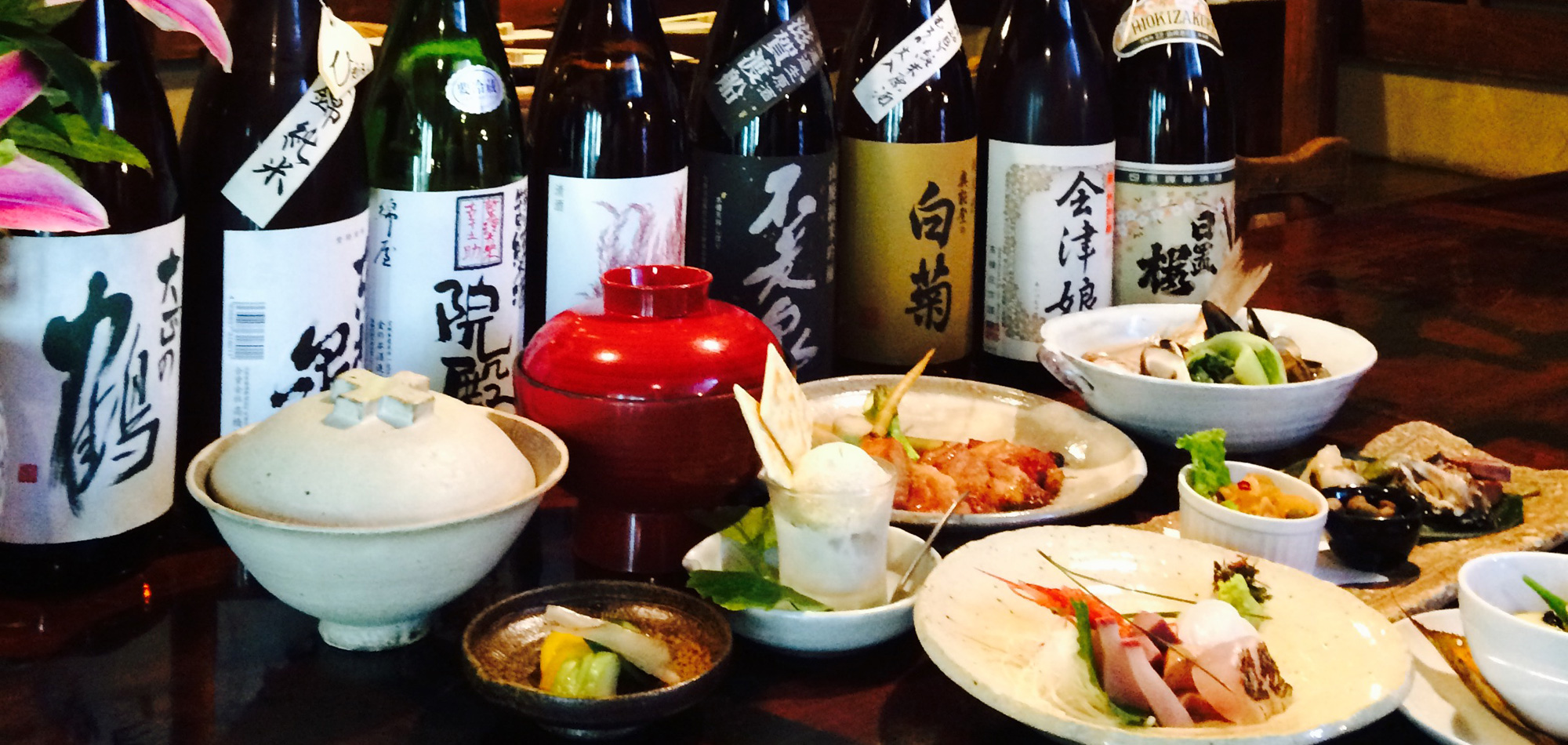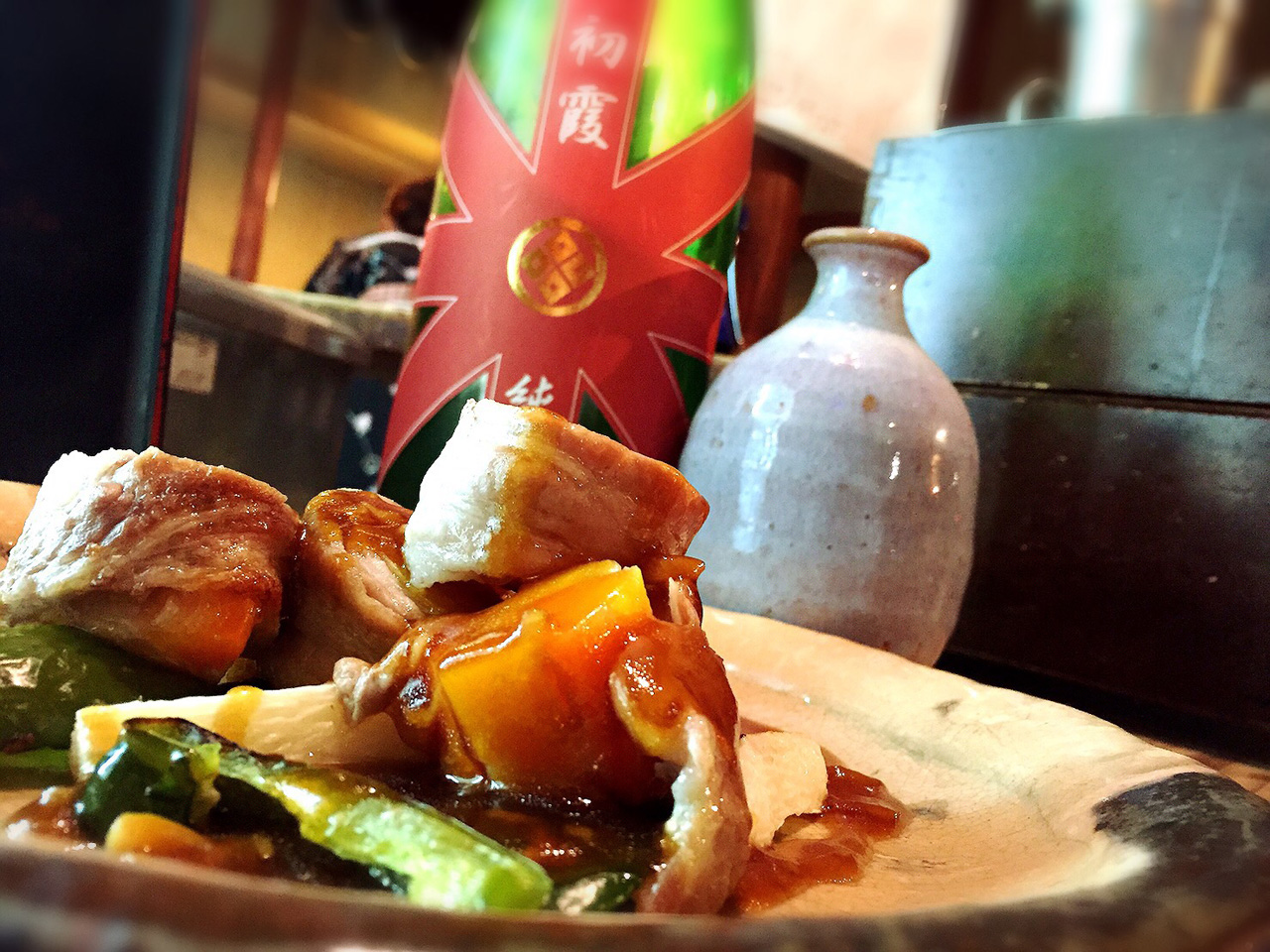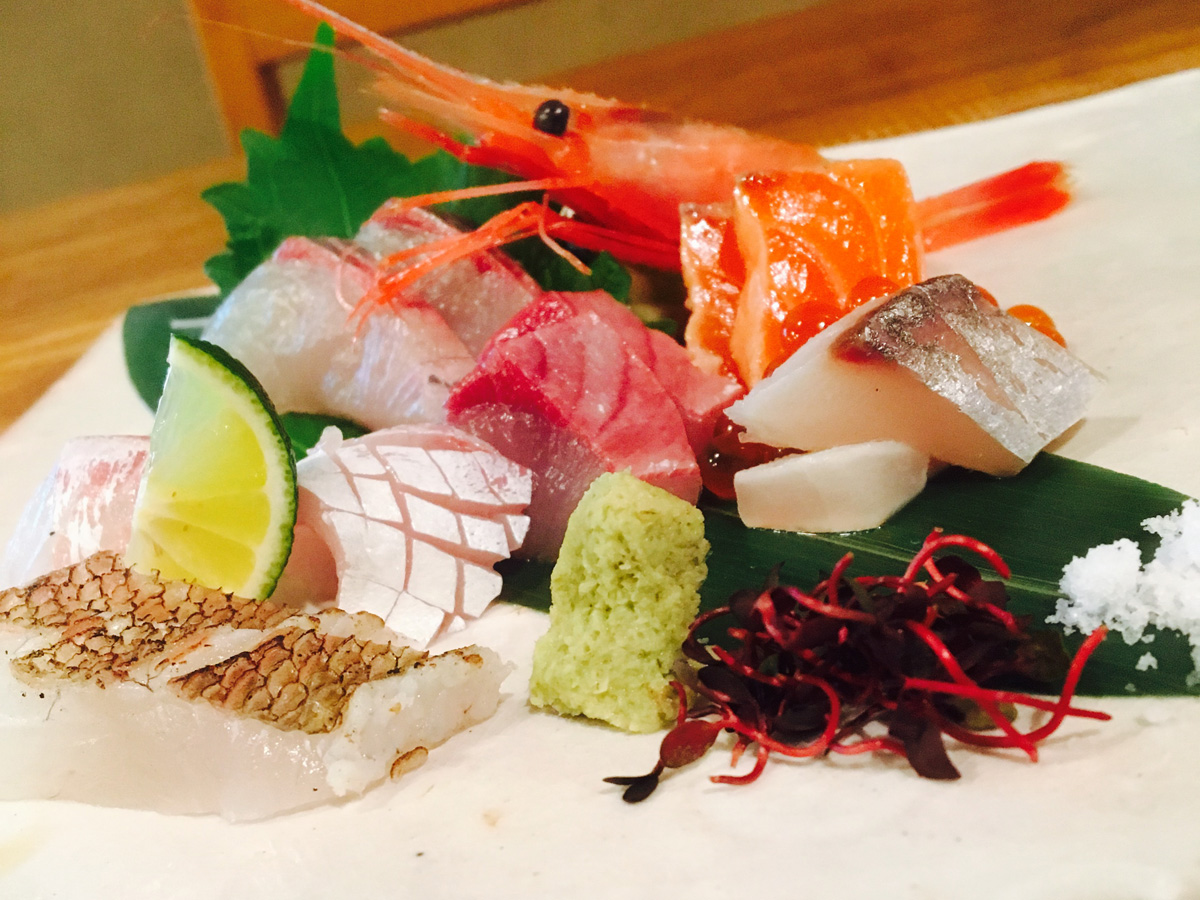There are various preparations of saké—hot, cold, etc.—and many varieties—daiginjo-shu (brewed from very highly polished rice grains milled to 50% or less of their weight), ginjo-shu (brewed from highly polished rice grains milled to 60% or less of their weight), jukusei-shu (aged over a longer period), junmai-shu (brewed from polished rice grains milled to 70% or less of their weight), honjozo-shu (made with a small amount of pure distilled alcohol), etc. We are quite happy to provide on-the-spot suggestions for how to drink saké in a way that best fits the meal. Participants in Yamanaka saké shop taste testing (fees apply) can experience how the same saké changes flavors when paired with each type of dish. Our affiliated dining establishments serve saké suited to each individual dish. As noted above, saké contains rice, water, and rice-malt, while the varieties of saké differ based on the degree to which the rice is polished. This creates either daiginjo-shu, ginjo-shu, or junmai-shu. Processing approaches also change the flavor based on whether the product is pasteurized or not, and filtered or not. Additionally, using different rice while keeping the production the same can also change the flavor. Perhaps Japanese saké is the only spirit that offers so many enjoyable contrasts based on its temperature. Choose the meal to fit the saké...or choose the saké to fit the meal... (Our staff will assist you if indecision keeps you from enjoying the experience)



